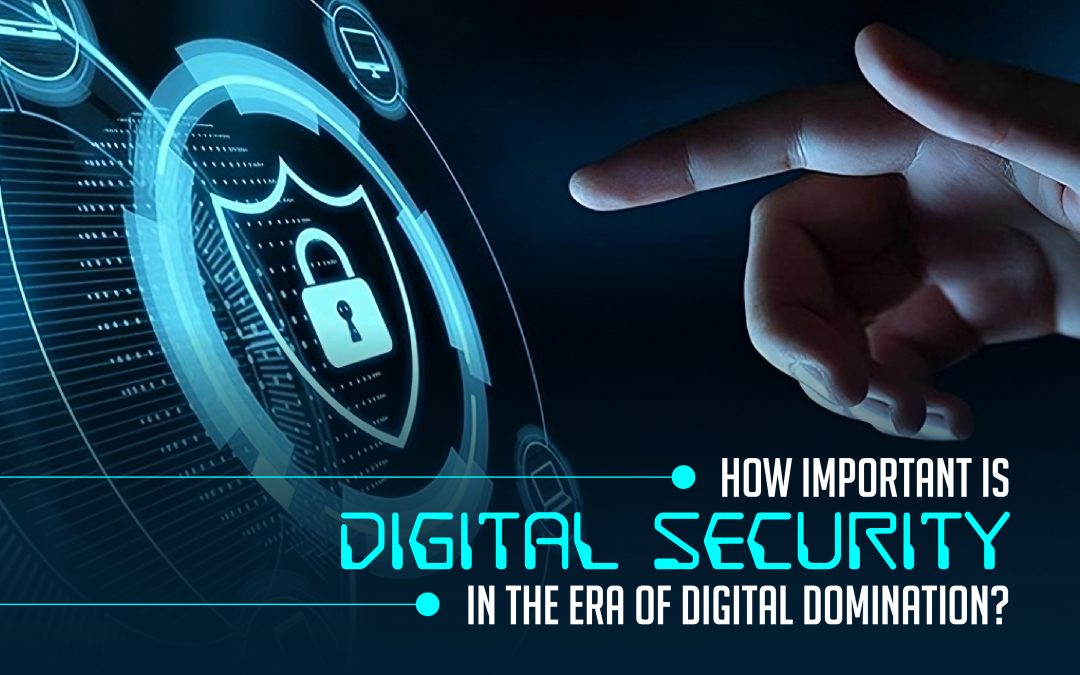In the age of digital transformation, the importance of digital security has never been more critical. As technology continues to evolve and permeate every facet of our lives, the risks associated with digital threats are also escalating. Let’s delve deeper into why digital security is paramount and how you can protect yourself and your organization.
1. The Rising Threat of Cybercrime
The explosion of digital technologies has created a fertile ground for cybercrime. Cybercriminals exploit vulnerabilities in digital systems to commit various types of crimes. Here’s a closer look at some major cyber threats:
Phishing Attacks
Phishing is a social engineering attack where attackers send fraudulent communications, often appearing to come from a trusted source, to deceive individuals into revealing sensitive information. This could be login credentials, financial information, or other personal data.
Examples:
- Email Phishing: An email pretending to be from a bank asks the recipient to click on a link and enter their account details.
- Spear Phishing: A more targeted form of phishing where the attacker customizes the message to a specific individual or organization, often using information gleaned from social media.
Impact:
- Financial Losses: Victims may lose money directly or have their accounts drained.
- Identity Theft: Stolen information can be used to open new accounts in the victim’s name.
Ransomware
Ransomware is malicious software that encrypts the victim’s files or entire system, rendering it inaccessible until a ransom is paid. This type of attack can cripple both individuals and organizations.
Examples:
- WannaCry: A notorious ransomware attack that affected organizations worldwide, including hospitals and businesses.
- Cryptolocker: Encrypts files and demands payment in cryptocurrency for decryption keys.
Impact:
- Operational Disruption: Businesses may experience downtime and loss of productivity.
- Financial Costs: Payments to hackers and potential costs for restoring systems.
Data Breaches
A data breach occurs when unauthorized individuals gain access to confidential data. This can be due to vulnerabilities in security systems, human error, or malicious intent.
Examples:
- Equifax Breach: Exposed sensitive information of approximately 147 million people.
- Yahoo Data Breach: Affected over 3 billion user accounts.
Impact:
- Reputation Damage: Loss of trust from customers and partners.
- Legal Consequences: Potential fines and legal actions for failing to protect data.
2. Protecting Personal Information
In a digital world where personal information is frequently shared and stored online, protecting this data is crucial. Here’s how you can enhance personal digital security:
Use Strong, Unique Passwords
A strong password is essential for securing your accounts. It should be complex and not easily guessable.
Best Practices:
- Length and Complexity: Use a mix of letters, numbers, and symbols.
- Avoid Common Passwords: Don’t use easily accessible information like birthdays or common phrases.
Impact:
- Prevents Unauthorized Access: Reduces the likelihood of accounts being compromised.
- Enhances Overall Security: Strengthens the security of multiple accounts if unique passwords are used.
Enable Two-Factor Authentication (2FA)
Two-factor authentication adds an additional layer of security by requiring a second form of verification beyond just the password.
Examples:
- SMS Codes: A code sent to your phone that you must enter along with your password.
- Authentication Apps: Apps like Google Authenticator generate time-based codes.
Impact:
- Increased Security: Even if a password is compromised, the second factor provides additional protection.
- Mitigates Risks: Reduces the chances of unauthorized access.
Be Wary of Phishing Scams
Phishing scams can be sophisticated, making it essential to be cautious.
Best Practices:
- Verify Sources: Double-check the sender’s email address and the authenticity of the message.
- Avoid Clicking Links: Navigate directly to websites rather than clicking on links in emails.
Impact:
- Prevents Data Theft: Reduces the risk of falling victim to scams.
- Protects Personal Information: Safeguards sensitive information from being stolen.
3. Safeguarding Business Assets
Businesses face unique challenges in digital security, given their need to protect sensitive data, maintain operational continuity, and comply with regulations.
Implement Robust Firewalls
Firewalls act as a barrier between your network and potential threats from the internet. They can be hardware-based, software-based, or a combination of both.
Best Practices:
- Configure Properly: Ensure that the firewall is set up to block unauthorized access while allowing legitimate traffic.
- Regular Updates: Keep firewall software up-to-date to protect against new threats.
Impact:
- Prevents Unauthorized Access: Shields the network from external attacks.
- Monitors Traffic: Helps identify and block malicious activity.
Encrypt Sensitive Data
Encryption transforms data into a format that is unreadable without a decryption key. This protects data during storage and transmission.
Best Practices:
- Use Strong Encryption Standards: Such as AES-256 for sensitive data.
- Encrypt Data at Rest and in Transit: Protects data stored on devices and being transmitted over networks.
Impact:
- Secures Data: Prevents unauthorized access even if data is intercepted.
- Maintains Confidentiality: Ensures that sensitive information remains private.
Conduct Regular Security Audits
Regular security audits help identify and address vulnerabilities in your systems.
Best Practices:
- Schedule Audits: Conduct audits periodically or after significant changes to the system.
- Engage Experts: Utilize third-party security professionals for thorough assessments.
Impact:
- Identifies Weaknesses: Provides insights into potential security gaps.
- Enhances Security Measures: Allows for timely updates and improvements.
4. Compliance with Regulations
Digital security is not just about protecting data; it’s also about adhering to legal requirements.
GDPR (General Data Protection Regulation)
The GDPR is a comprehensive data protection regulation in the EU that requires organizations to protect the personal data of EU citizens.
Key Requirements:
- Consent: Obtain explicit consent from individuals before processing their data.
- Data Access: Provide individuals with access to their data and the ability to request deletion.
Impact:
- Avoids Fines: Non-compliance can result in significant financial penalties.
- Builds Trust: Demonstrates commitment to protecting user data.
CCPA (California Consumer Privacy Act)
The CCPA provides California residents with rights regarding their personal data and imposes obligations on businesses.
Key Requirements:
- Disclosure: Inform consumers about the data being collected and its purposes.
- Opt-Out: Allow consumers to opt-out of the sale of their personal information.
Impact:
- Legal Compliance: Ensures adherence to state-specific data protection laws.
- Consumer Confidence: Enhances trust by respecting privacy rights.
5. Future-Proofing Against Emerging Threats
As technology advances, so do the tactics used by cybercriminals. Future-proofing involves staying ahead of potential threats by adopting advanced technologies and strategies.
Adopt Advanced Security Technologies
Technologies such as artificial intelligence (AI) and machine learning (ML) can enhance threat detection and response.
Examples:
- AI-Driven Security: AI systems can analyze vast amounts of data to identify anomalies and potential threats.
- Machine Learning: ML algorithms can learn from past incidents to predict and prevent future attacks.
Impact:
- Improves Detection: Enhances the ability to identify and respond to threats in real time.
- Strengthens Security Posture: Provides a proactive approach to threat management.
Stay Informed About Emerging Threats
Keeping up-to-date with the latest cybersecurity trends and threat intelligence is crucial.
Best Practices:
- Subscribe to Security Bulletins: Follow updates from cybersecurity organizations and experts.
- Participate in Training: Engage in ongoing education and training for yourself and your team.
Impact:
- Informed Decisions: Helps in understanding new threats and updating security practices accordingly.
- Proactive Measures: Allows for timely adaptation to evolving threats.
Conclusion
In an era where digital technologies are deeply ingrained in our personal and professional lives, digital security is not just a necessity but a fundamental requirement. By understanding the rising threats, implementing strong protective measures, ensuring compliance with regulations, and preparing for future challenges, individuals and businesses can better safeguard their digital presence. Embrace these practices to secure your digital world and stay ahead in the ever-evolving landscape of digital security.












